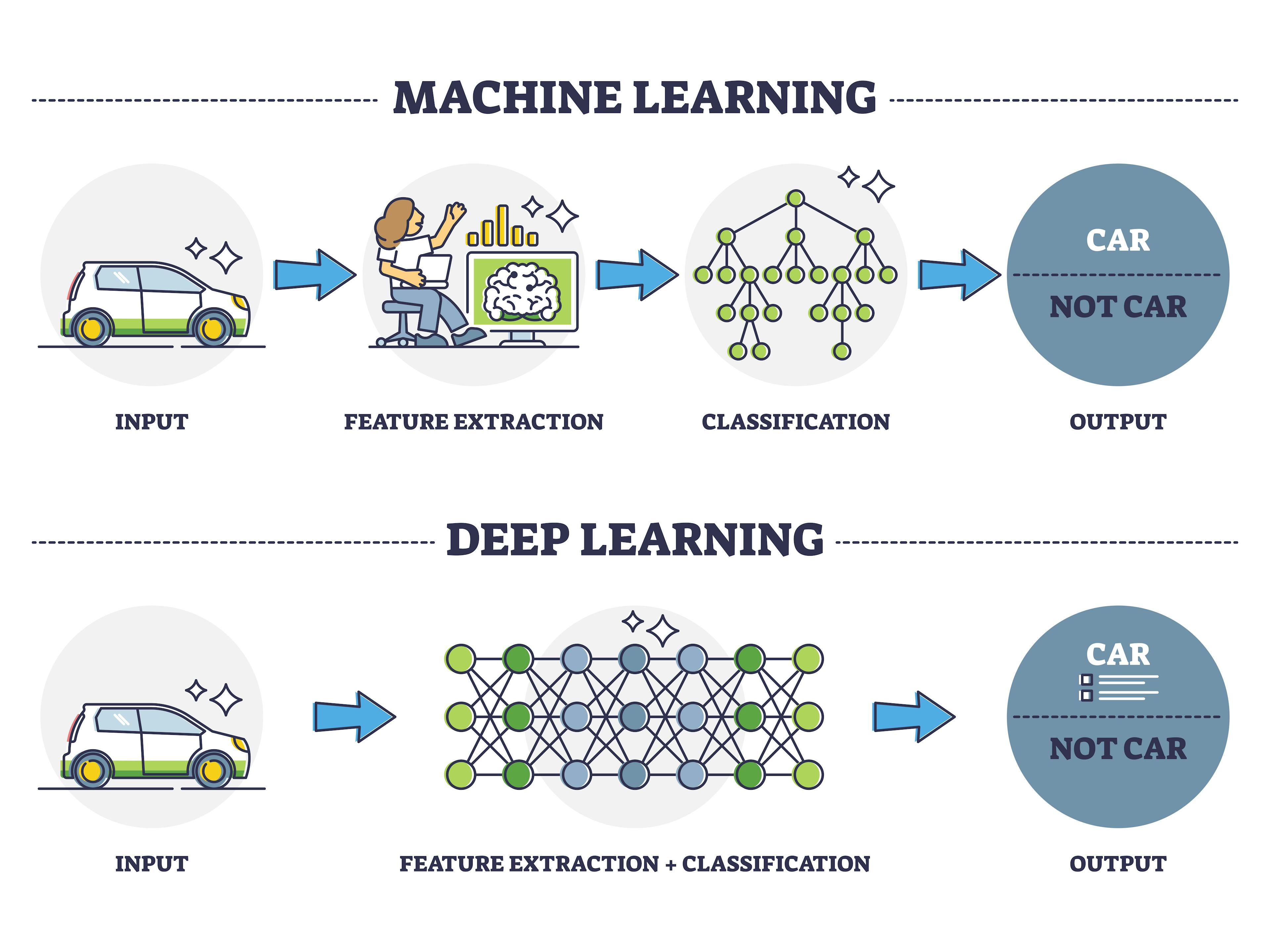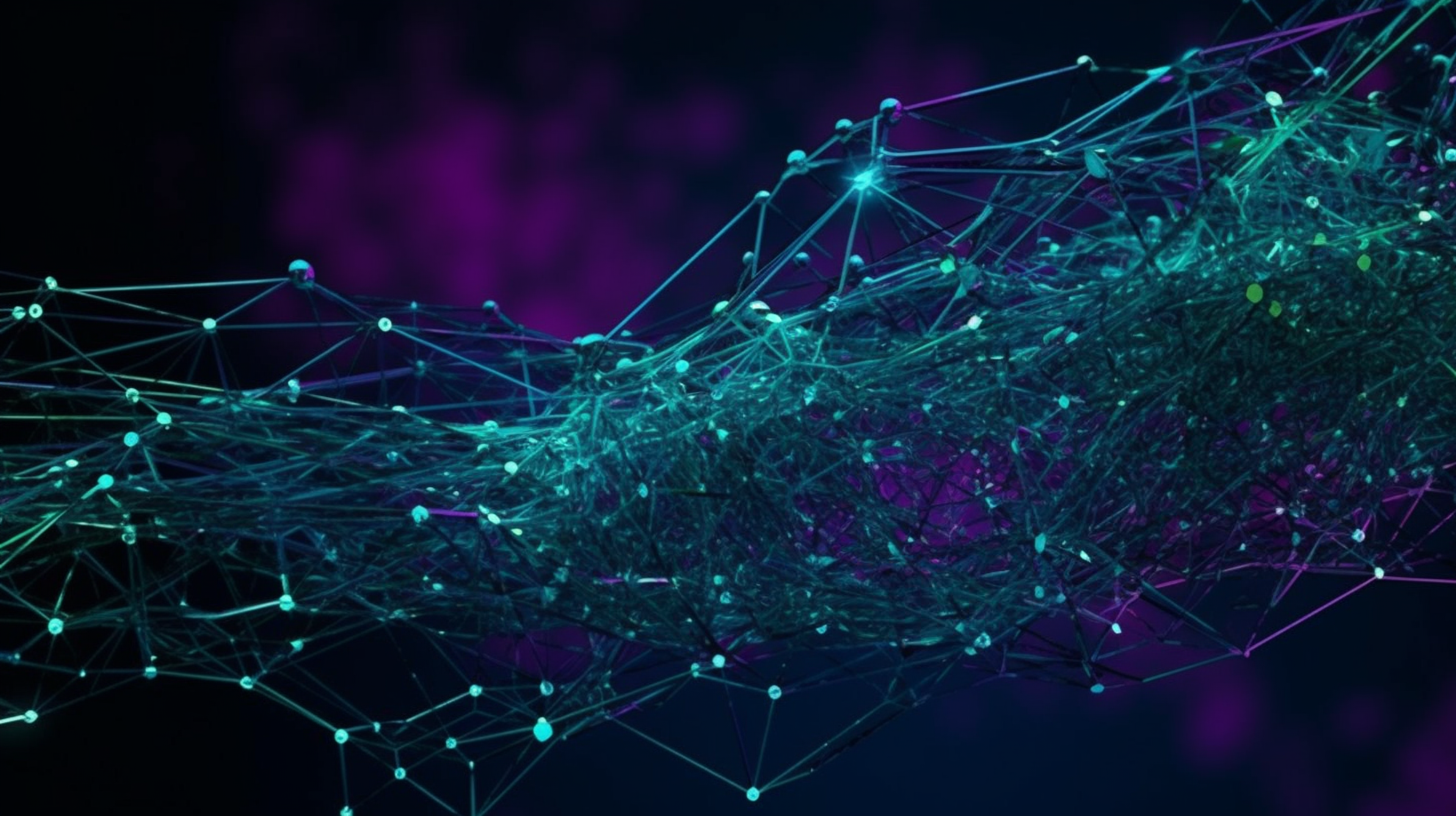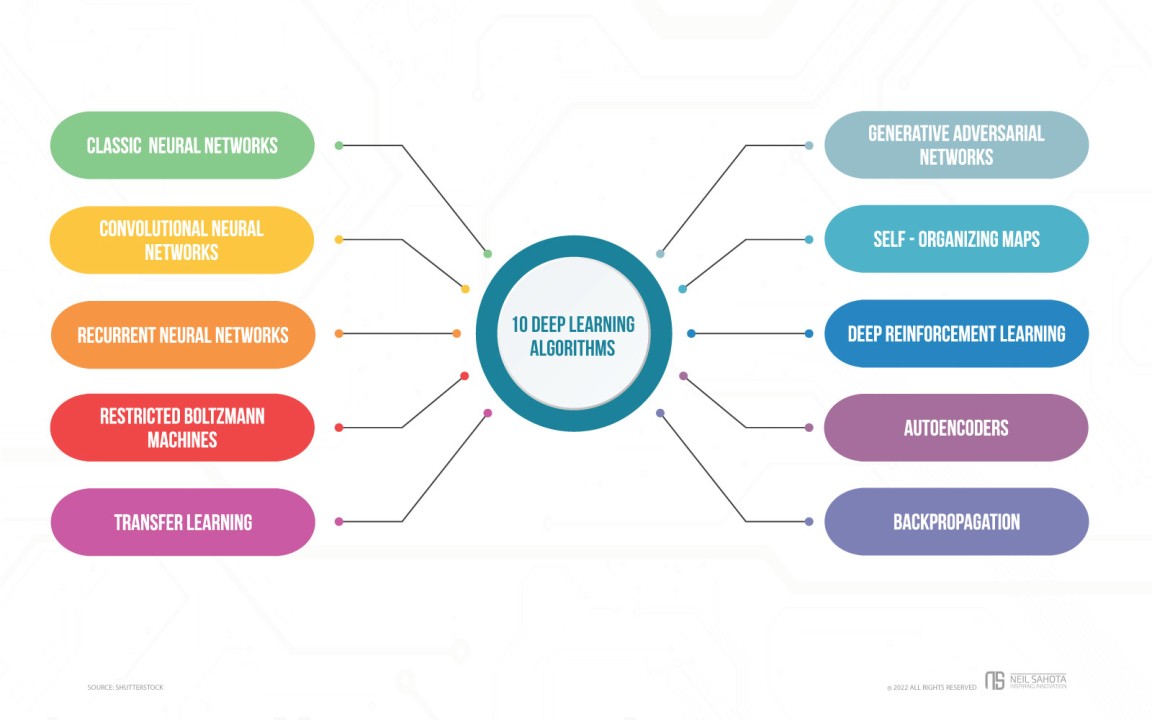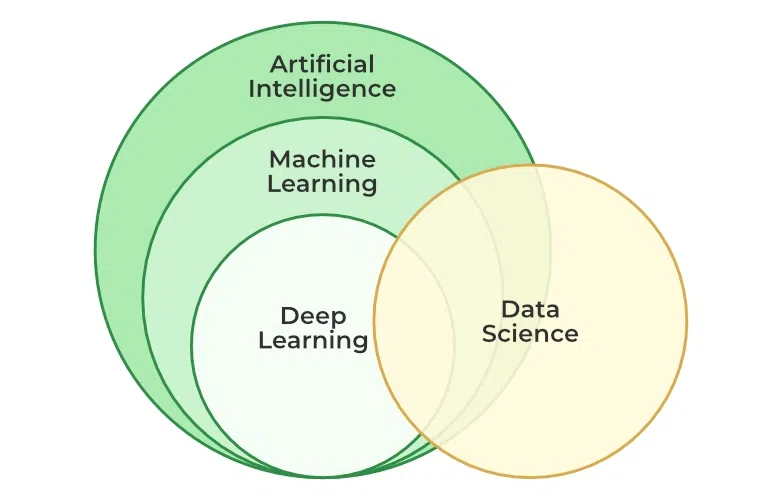Deep Learning is a subset of machine learning involving neural networks with many layers. It mimics the human brain to process data.
Deep Learning revolutionizes the way machines understand and interpret vast amounts of data. It uses complex algorithms to identify patterns and make decisions. This technology powers applications like image recognition, natural language processing, and autonomous driving. Industries such as healthcare, finance, and entertainment benefit from its capabilities.
Deep Learning models improve over time as they process more data, enhancing their accuracy and efficiency. This transformative technology continues to push the boundaries of artificial intelligence, promising significant advancements in numerous fields. Businesses leverage Deep Learning to gain insights, predict trends, and optimize operations, making it indispensable in today’s data-driven world.
Demystifying Deep Learning
Deep learning can seem complex. But breaking it down makes it easier to understand. This section will help you grasp the basics and see its real-world uses.
Core Concepts
Deep learning is a subset of machine learning. It mimics the human brain. The core concepts involve neural networks. These networks have layers that process data. Each layer extracts features from the data.
Here are some key components:
- Neurons: Basic units of a neural network.
- Layers: Groups of neurons.
- Activation Functions: Decide if a neuron should be activated.
Neural networks learn from data. They adjust their weights and biases. This process is called training. During training, the network minimizes errors. This improves its predictions.
Real-world Applications
Deep learning has many real-world applications. It helps in various fields. Here are some examples:
| Field | Application |
|---|---|
| Healthcare | Detecting diseases from medical images. |
| Finance | Fraud detection in transactions. |
| Automotive | Enabling self-driving cars. |
| Retail | Personalized shopping recommendations. |
In healthcare, deep learning can analyze X-rays. It can find signs of pneumonia or cancer. This speeds up diagnosis and treatment. In finance, it helps identify fraudulent activities. This protects users from fraud.
Self-driving cars use deep learning. They can recognize objects on the road. This includes other cars and pedestrians. In retail, deep learning provides personalized recommendations. It analyzes customer preferences and purchase history.

Credit: www.turing.com
Evolution Of Artificial Intelligence
The journey of Artificial Intelligence (AI) has been remarkable. It started as a dream to create machines that think. Today, it’s a reality shaping our world. This evolution has paved the way for Deep Learning. Let’s explore how AI evolved over time.
From Ai To Deep Learning
AI began with simple programs that could play games. These early systems used basic rules to make decisions. Machine Learning (ML) was the next big step. ML algorithms learn from data. They improve their performance over time.
Deep Learning (DL) is a subset of ML. It uses neural networks with many layers. These networks can learn complex patterns. DL has revolutionized fields like image and speech recognition. It powers applications we use every day.
Milestones In Ai Development
| Year | Milestone |
|---|---|
| 1956 | Dartmouth Conference – Birth of AI |
| 1966 | ELIZA – First Chatbot |
| 1997 | IBM’s Deep Blue beats chess champion Garry Kasparov |
| 2012 | AlexNet wins ImageNet competition using Deep Learning |
| 2016 | AlphaGo beats Go champion Lee Sedol |
Each milestone represents a leap forward. They show how far AI has come. From simple rule-based systems to powerful Deep Learning algorithms. DL continues to push the boundaries of what’s possible.
Deep Learning At Work
Deep learning is transforming many industries. From healthcare to finance, its impact is profound. This section explores how deep learning operates and how to train models effectively.
The Mechanism Of Neural Networks
Neural networks are the backbone of deep learning. They mimic the human brain. Each network has layers of neurons.
Here’s a simple structure of a neural network:
| Layer | Description |
|---|---|
| Input Layer | Receives raw data |
| Hidden Layers | Process data with weights and biases |
| Output Layer | Produces final prediction |
Neurons in each layer are interconnected. They pass information forward. This process is known as forward propagation.
The network learns by adjusting weights. This adjustment happens during training. The goal is to minimize errors.
Training Models Effectively
Training a deep learning model requires data. The model learns patterns from this data. Here’s how to train a model effectively:
- Data Preparation: Clean and preprocess data. This step ensures quality.
- Model Selection: Choose the right architecture. Different tasks need different models.
- Training: Use algorithms like
Stochastic Gradient Descent (SGD). This optimizes the model. - Validation: Test the model on unseen data. This checks its accuracy.
- Hyperparameter Tuning: Adjust settings like learning rate. This improves performance.
Training can be computationally intensive. It requires powerful hardware. GPUs are often used for this purpose.
Once trained, the model can make predictions. It can classify images, recognize speech, and more.

Credit: www.udacity.com
Key Technologies Powering Deep Learning
Deep learning is transforming many industries. The core of this transformation lies in key technologies. These technologies make deep learning faster and more efficient.
Advancements In Gpus
One of the most significant technologies powering deep learning is the Graphics Processing Unit (GPU). GPUs are highly efficient at handling multiple tasks at once. This ability makes them perfect for the complex calculations required in deep learning.
In recent years, there have been major advancements in GPU technology. These include:
- Increased Processing Power: Modern GPUs have more cores and higher clock speeds.
- Better Energy Efficiency: Newer GPUs consume less power, making them more cost-effective.
- Improved Memory: Enhanced memory capacity and bandwidth allow for faster data processing.
These advancements enable deep learning models to train faster and more accurately.
Breakthroughs In Data Storage
Data storage is another crucial technology for deep learning. High volumes of data are essential for training deep learning models. Breakthroughs in data storage have significantly impacted the field.
Some key breakthroughs include:
- Solid-State Drives (SSDs): SSDs provide faster read and write speeds than traditional hard drives.
- Cloud Storage: Cloud storage solutions offer scalable and flexible storage options.
- Data Compression: Advanced compression techniques reduce the storage space required for large datasets.
These breakthroughs help in managing large datasets efficiently. They also ensure faster access to data for training models.
In summary, advancements in GPUs and breakthroughs in data storage are powering the rapid growth of deep learning. These technologies make it possible to handle complex computations and large datasets with ease.
Industries Transformed By Deep Learning
Deep learning is a powerful technology. It changes many industries. This technology uses advanced algorithms. These algorithms learn from data. They make smart decisions. Let’s explore how deep learning transforms different sectors.
Healthcare Innovations
Healthcare benefits greatly from deep learning. This technology improves diagnostics. It helps doctors find diseases early. Medical imaging is one area where deep learning shines. Algorithms can read X-rays better than some experts.
Personalized treatment is another benefit. Deep learning analyzes patient data. It suggests the best treatments. Predictive analytics helps in predicting health issues. This technology can even save lives.
| Application | Benefit |
|---|---|
| Medical Imaging | Better disease detection |
| Personalized Treatment | Customized healthcare plans |
| Predictive Analytics | Early health issue prediction |
Automotive Breakthroughs
The automotive industry is also transformed. Self-driving cars are a major innovation. Deep learning algorithms help these cars navigate safely. They learn from real-world driving data.
Predictive maintenance is another key area. Cars can now predict when parts will fail. This helps in reducing accidents. Driver assistance systems also use deep learning. They make driving safer and easier.
- Self-Driving Cars: Safe and efficient navigation
- Predictive Maintenance: Reduced accidents
- Driver Assistance Systems: Enhanced safety and ease
Challenges In Deep Learning Adoption
Deep learning has revolutionized various industries. Despite its potential, there are significant challenges to its adoption. These challenges need addressing for effective implementation.
Data Privacy Concerns
Data privacy is a major issue in deep learning. Models often require large datasets, which can contain sensitive information. Protecting this data is crucial. Data breaches can lead to severe consequences.
Organizations must comply with data protection laws. Regulations like GDPR impose strict rules. Violating these laws can result in heavy fines. Ensuring data privacy adds complexity to deep learning projects.
Computational Resource Constraints
Deep learning models are computationally intensive. They require powerful hardware and large amounts of memory. Not all organizations have access to these resources.
Training these models can be time-consuming and costly. High-performance GPUs and TPUs are expensive. Smaller companies may struggle to afford these costs. Resource constraints can limit the scalability of deep learning solutions.
| Challenge | Impact | Solution |
|---|---|---|
| Data Privacy | Risk of data breaches | Implement robust security measures |
| Computational Resources | High costs and time | Invest in scalable infrastructure |
Addressing these challenges is crucial for the successful adoption of deep learning. Organizations must balance innovation with compliance and resource management.
Future Horizons: Deep Learning’s Potential
Deep Learning is growing at a fast pace. Its potential is huge and exciting. We will explore some of its promising future horizons.
Predictive Analytics
Predictive Analytics uses Deep Learning to forecast future events. Businesses use it to predict customer behavior. It helps in making smarter decisions. For example, retailers can forecast sales trends.
| Industry | Use Case |
|---|---|
| Retail | Sales Forecasting |
| Healthcare | Patient Diagnosis |
| Finance | Stock Market Predictions |
Healthcare uses predictive analytics to diagnose diseases early. Finance industries use it to predict stock market trends. The power of prediction makes it valuable.
Personalized Ai Experiences
Personalized AI Experiences tailor content to individual needs. Deep Learning makes this possible. Streaming services recommend shows based on your taste. E-commerce sites suggest products you may like.
- Streaming Services: Custom show recommendations
- E-commerce: Personalized product suggestions
- Healthcare: Customized treatment plans
Healthcare can offer personalized treatment plans. Education can adapt learning materials to each student’s pace. Personalized AI experiences enrich our lives.
Getting Started With Deep Learning
Deep Learning is a powerful branch of Artificial Intelligence. It mimics the human brain to process data and create patterns for decision making. This section will guide you on how to get started with Deep Learning.
Educational Resources
Access to the right educational resources is crucial. Here are some top resources to help you begin:
- Online Courses: Websites like Coursera, edX, and Udacity offer comprehensive courses on Deep Learning.
- Books: “Deep Learning” by Ian Goodfellow, Yoshua Bengio, and Aaron Courville is a must-read.
- Research Papers: Explore papers from arXiv for the latest research in Deep Learning.
- Communities: Join forums like Reddit’s r/MachineLearning and Stack Overflow to discuss and solve problems.
Building Your First Neural Network
Building your first neural network can be an exciting journey. Let’s break down the steps:
- Set Up Your Environment: Install Python and libraries like TensorFlow or PyTorch.
- Prepare Your Data: Clean and preprocess your dataset. Use libraries like Pandas and NumPy.
- Define Your Model: Choose the architecture of your neural network. Here’s a simple example using TensorFlow:
import tensorflow as tf
from tensorflow.keras.models import Sequential
from tensorflow.keras.layers import Dense
# Define the model
model = Sequential([
Dense(128, activation='relu', input_shape=(input_shape,)),
Dense(64, activation='relu'),
Dense(10, activation='softmax')
])
# Compile the model
model.compile(optimizer='adam', loss='sparse_categorical_crossentropy', metrics=['accuracy'])
# Train the model
model.fit(train_data, train_labels, epochs=10)
- Train Your Model: Use your dataset to train the neural network.
- Evaluate and Improve: Test the model’s performance and tweak parameters to improve accuracy.
Starting with Deep Learning can be challenging but highly rewarding. Utilize these resources and steps to build a strong foundation.
Ethical Considerations In Deep Learning
Deep learning has revolutionized various fields, but it comes with ethical concerns. These concerns need addressing to ensure technology serves everyone fairly and responsibly.
Bias And Fairness
Deep learning systems can inherit biases from training data. This can lead to unfair and discriminatory outcomes.
Bias in deep learning can occur at several stages, including data collection, model training, and deployment. Fairness ensures that these systems do not favor one group over another.
- Data Collection: Biased data can produce biased models.
- Model Training: The algorithm itself can introduce bias.
- Deployment: How the model is used can also create bias.
To ensure fairness, it is crucial to analyze and mitigate bias at each stage. Regular audits and diverse datasets can help achieve this goal.
Regulatory Compliance
Regulatory compliance ensures that deep learning systems adhere to laws and guidelines. This is important for protecting user rights and maintaining trust.
Several regulations and standards exist to guide ethical AI development:
- GDPR: The General Data Protection Regulation protects data privacy.
- CCPA: The California Consumer Privacy Act gives consumers more control over their data.
- ISO/IEC 27001: This standard focuses on information security management.
| Regulation | Focus Area |
|---|---|
| GDPR | Data Privacy |
| CCPA | Consumer Data Control |
| ISO/IEC 27001 | Information Security |
Adhering to these regulations not only ensures legal compliance but also builds public trust. This is essential for the widespread adoption of deep learning technologies.
Innovators And Thought Leaders In Deep Learning
Deep Learning is a rapidly evolving field. It is driven by brilliant minds and innovative companies. These pioneers shape the future of technology. They push the boundaries of what machines can learn and do. This section highlights some of the key players in this exciting domain.
Influential Researchers
Many researchers have made significant contributions to Deep Learning. They have brought groundbreaking advancements to the field.
- Geoffrey Hinton: Often called the “Godfather of Deep Learning.” He has developed many of the foundational algorithms.
- Yann LeCun: Known for his work on Convolutional Neural Networks (CNNs). He has been a driving force behind modern computer vision.
- Andrew Ng: A pioneer in online education for AI. He co-founded Google Brain and leads many AI initiatives.
- Yoshua Bengio: A leader in Recurrent Neural Networks (RNNs). He has contributed to many innovations in natural language processing (NLP).
Rising Companies
Several companies are leading the charge in Deep Learning. They are creating cutting-edge applications and tools.
| Company | Focus Area | Key Achievements |
|---|---|---|
| OpenAI | General AI, NLP | Developed GPT-3, a powerful language model. |
| DeepMind | Reinforcement Learning | Created AlphaGo, which defeated human Go champions. |
| Hugging Face | NLP, Transformers | Released popular libraries for NLP tasks. |
| NVIDIA | AI Hardware, Software | Provides GPUs and software frameworks for AI research. |
Influential researchers and rising companies are at the forefront of Deep Learning. They are continuously innovating and transforming the tech landscape. Their work enables machines to learn, adapt, and perform complex tasks. This makes our world smarter and more connected.

Credit: www.linkedin.com
Frequently Asked Questions
What Do You Mean By Deep Learning?
Deep learning is a subset of machine learning using neural networks to model complex patterns and make decisions. It mimics human brain functions.
What Are The Three Types Of Deep Learning?
The three types of deep learning are supervised learning, unsupervised learning, and reinforcement learning. Supervised learning uses labeled data. Unsupervised learning analyzes patterns in unlabeled data. Reinforcement learning learns through trial and error using rewards.
What Is Deep Learning Vs Machine Learning?
Deep learning is a subset of machine learning using neural networks. Machine learning uses algorithms to learn from data.
Is Deep Learning Easy?
Deep learning is challenging but rewarding. It requires understanding complex algorithms, mathematics, and substantial computational power. With dedication and practice, it becomes manageable.
Conclusion
Deep learning is transforming industries with its powerful capabilities. It’s making significant strides in technology and innovation. By understanding its potential, businesses can harness its power. Staying updated on this evolving field is crucial. Embrace deep learning to stay competitive and drive future growth.
The possibilities are truly limitless.

